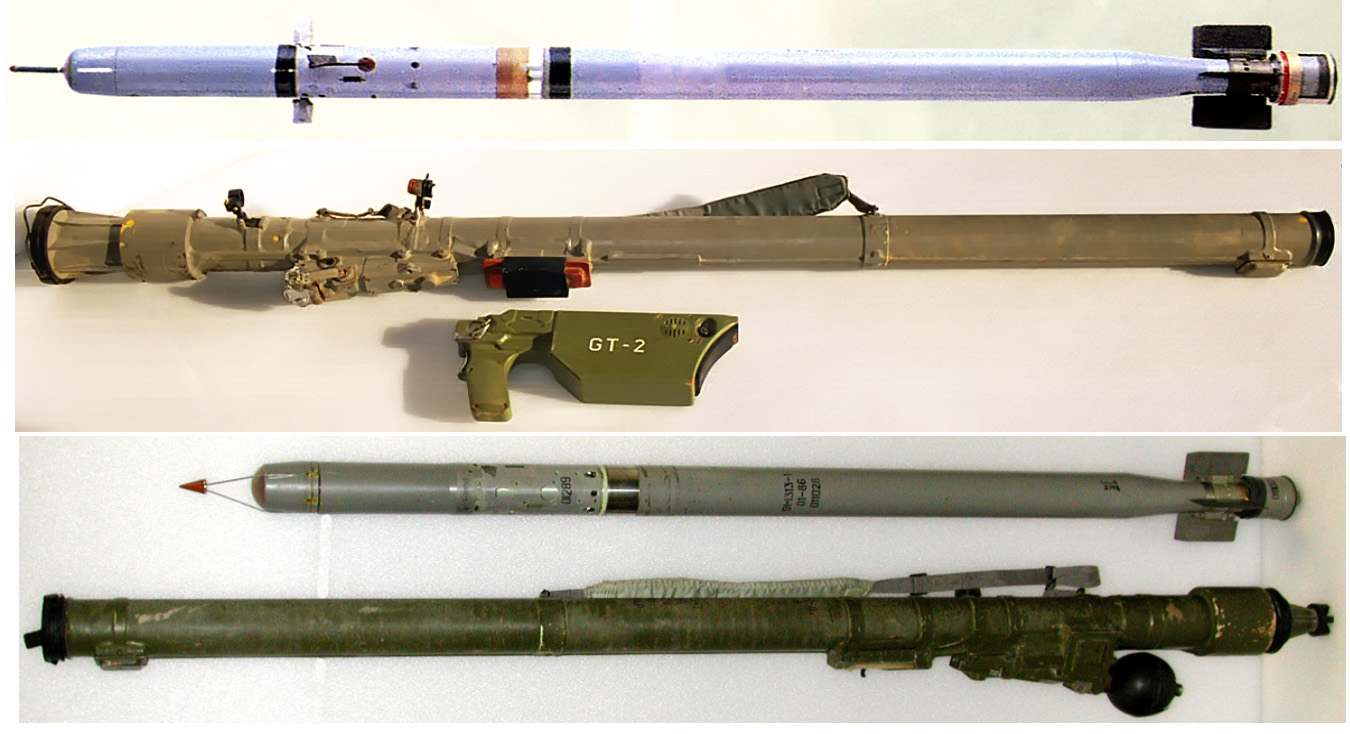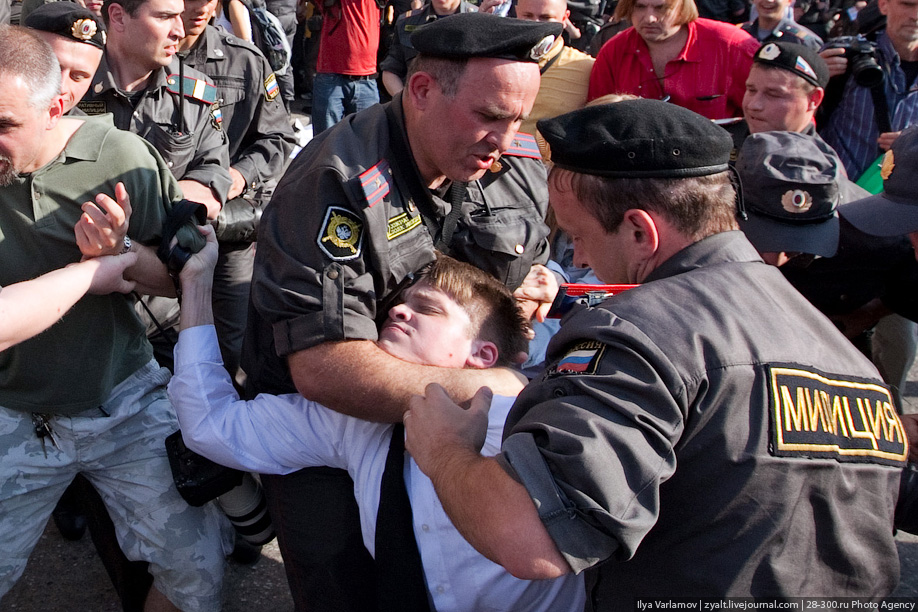|
Guerrilla Phase Of The Second Chechen War (2002)
Timeline The Russian military stated that 480 Russian soldiers were killed in Chechnya in 2002. January * January 3 - Six-day fighting in Tsotsin-Yurt claimed around 100 rebels killed according to Moscow, and 40 Russians were killed according to the Chechen separatists. Five Russian troops were killed in the other attacks across Chechnya. * January 17 - More than 30 Russian servicemen reportedly died in separate attacks on troop columns in the Vedeno and Urus-Martan districts. * January 19 - Seven Russian Internal Troops have died and three were wounded in an explosion of a remote-controlled mine in Dagestan. Rebel attacks in Chechnya killed eight troops and injured nine, while the military detained 86 people on suspicion of participating in rebel formation during a series of security sweeps. * January 27 - A Russian Interior Ministry Mi-8 was shot down in Nadterechny District, killing 14 people including crew. Among those killed in the crash were Russian deputy interior ... [...More Info...] [...Related Items...] OR: [Wikipedia] [Google] [Baidu] |
2002 Khankala Mi-26 Crash
On 19 August 2002, a group of Chechen separatists armed with a man-portable air-defense system brought down a Russian Mil Mi-26 helicopter in a minefield, which resulted in the death of 127 Russian soldiers in the greatest loss of life in the history of helicopter aviation. It was also the most deadly aviation disaster ever suffered by the Russian Armed Forces, as well as its worst loss of life in a single day since the 1999 start of the Second Chechen War. Attack On 19 August 2002, Chechen separatist fighters launched a Russian-made 9K38 Igla shoulder-fired, heat-seeking surface-to-air missile which hit an overloaded Mil Mi-26 heavy transport helicopter of the 487th Separate Helicopter Regiment, causing it to crash-land and burn at Khankala military air base near Chechnya's capital city of Grozny. The helicopter was ferrying 142 soldiers and officers belonging to various units, mostly from the 20th Guards Motor Rifle Division, from the Russian Air Force base at Mozdok, Rep ... [...More Info...] [...Related Items...] OR: [Wikipedia] [Google] [Baidu] |
Landmine
A land mine is an explosive device concealed under or on the ground and designed to destroy or disable enemy targets, ranging from combatants to vehicles and tanks, as they pass over or near it. Such a device is typically detonated automatically by way of pressure when a target steps on it or drives over it, although other detonation mechanisms are also sometimes used. A land mine may cause damage by direct blast effect, by fragments that are thrown by the blast, or by both. Landmines are typically laid throughout an area, creating a ''minefield'' which is dangerous to cross. The use of land mines is controversial because of their potential as indiscriminate weapons. They can remain dangerous many years after a conflict has ended, harming civilians and the economy. Seventy-eight countries are contaminated with land mines and 15,000–20,000 people are killed every year while many more are injured. Approximately 80% of land mine casualties are civilians, with children as the ... [...More Info...] [...Related Items...] OR: [Wikipedia] [Google] [Baidu] |
9K38 Igla
The 9K38 Igla (russian: Игла́, "needle", NATO reporting name SA-18 Grouse) is a Russian/Soviet man-portable infrared homing surface-to-air missile (SAM) system. A simplified, earlier version is known as the 9K310 Igla-1 (NATO: SA-16 Gimlet), and the latest variant is the 9K338 Igla-S (SA-24 Grinch). The Igla-1 entered service in 1981, the Igla in 1983, and the Igla-S in 2004. The Igla has been supplemented by the 9K333 Verba since 2014.New Russian Verba MANPADS will replace Igla-S - Armyrecognition.com, 15 September 2014 History The development of the Igla short-range man-portable air defense system ( MA ...[...More Info...] [...Related Items...] OR: [Wikipedia] [Google] [Baidu] |
Mi-26
The Mil Mi-26 (russian: link=no, Миль Ми-26, NATO reporting name: Halo) is a Soviet/Russian heavy transport helicopter. Its product code is ''Izdeliye 90''. Operated by both military and civilian operators, it is the largest and most powerful helicopter to have gone into serial production. Design and development Following the incomplete development of the heavier Mil Mi-12 (prototypes known as Mil V-12) in the early 1970s, work began on a new heavy-lift helicopter, designated as the ''Izdeliye 90'' ("Project 90") and later allocated designation ''Mi-26''. The new design was required to have an empty weight less than half its maximum takeoff weight. The helicopter was designed by Marat Tishchenko, protégé of Mikhail Mil, founder of the OKB-329 design bureau. The Mi-26 was designed to replace earlier Mi-6 and Mi-12 heavy lift helicopters and act as a heavy-lift helicopter for military and civil use, having twice the cabin space and payload of the Mi-6, then the world ... [...More Info...] [...Related Items...] OR: [Wikipedia] [Google] [Baidu] |
Shatoy
Shatoy (russian: Шато́й; ce, Шуьйта, translit=Şüyta), is a rural locality (a '' selo'') and the administrative center of Shatoysky District of the Chechen Republic, Russia. Population: Geography It is located in the southern part of the republic, on the right bank of the Argun River, in the Argun Gorge. Grozny is 57 km away. The nearest settlements: in the north-west - the villages of Hakkoy, Syuzhi and Great Varanda; in the northeast - the village of Zones; in the southeast, the villages of Bekum-Kale and Pamyat; in the south, the villages of Varda and Gush-Kurt; in the south-west is the village of Vashindara Climate Shatoy has a humid continental climate (Köppen climate classification The Köppen climate classification is one of the most widely used climate classification systems. It was first published by German-Russian climatologist Wladimir Köppen (1846–1940) in 1884, with several later modifications by Köppen, notabl ...: ''Dfb''). Reference ... [...More Info...] [...Related Items...] OR: [Wikipedia] [Google] [Baidu] |
Barracks
Barracks are usually a group of long buildings built to house military personnel or laborers. The English word originates from the 17th century via French and Italian from an old Spanish word "barraca" ("soldier's tent"), but today barracks are usually permanent buildings for military accommodation. The word may apply to separate housing blocks or to complete complexes, and the plural form often refers to a single structure and may be singular in construction. The main object of barracks is to separate soldiers from the civilian population and reinforce discipline, training, and ''esprit de corps''. They have been called "discipline factories for soldiers". Like industrial factories, some are considered to be shoddy or dull buildings, although others are known for their magnificent architecture such as Collins Barracks in Dublin and others in Paris, Berlin, Madrid, Vienna, or London. From the rough barracks of 19th-century conscript armies, filled with hazing and illness and bare ... [...More Info...] [...Related Items...] OR: [Wikipedia] [Google] [Baidu] |
2002 Grozny OMON Ambush
The 2002 Grozny OMON ambush occurred on April 18, 2002, when Chechen insurgents killed about 8 and wounded two republican OMON special police officers. The ambush occurred just 90 meters from Chechnya's main police headquarters. The first bus in a convoy hit a remote controlled mine, and the militants then opened fire on the line of vehicles from the ruins of a nearby high-rise building. Another version of the attack was presented by '' Nezavisimaya Gazeta'', which claimed there were two connected attacks. The incident preceded by two hours President Vladimir Putin's mid-term state-of-the-nation address, in which he said the "military phase" of the Chechen conflict had been completed. References External linksMine Leaves 21 OMON Troops Dead ''The St. Petersburg Times'', April 19, 2002 21st-century mass murder in Russia Grozny Grozny Grozny ( rus, Грозный, p=ˈgroznɨj; ce, Соьлжа-ГӀала, translit=Sölƶa-Ġala), also spelled Groznyy, is the c ... [...More Info...] [...Related Items...] OR: [Wikipedia] [Google] [Baidu] |
OMON
OMON (russian: ОМОН – Отряд Мобильный Особого Назначения , translit = Otryad Mobil'nyy Osobogo Naznacheniya , translation = Special Purpose Mobile Unit, , previously ru , Отряд Милиции Особого Назначения , translit = Otryad Militsii Osobogo Naznacheniya , translation = Special Purpose Unit of the Militia) is a system of special police units within the National Guard of Russia. It previously operated within the structures of the Soviet and Russian Ministries of Internal Affairs (MVD). Originating as the special forces unit of the Soviet Militsiya in 1988, it has played major roles in several armed conflicts during and following the 1991 dissolution of the Soviet Union. OMON is much larger and better known than SOBR, another special-police branch of the National Guard of Russia. In modern contexts, OMON serves as a riot police group, or as a gendarmerie-like paramilitary force. OMON units also exist in Belar ... [...More Info...] [...Related Items...] OR: [Wikipedia] [Google] [Baidu] |
Shatoysky District
Shatoysky District (russian: Шатойский райо́н; ce, Шуьйтан кӏошта, ''Şüytan khoşta'') is an administrativeDecree #500 and municipalLaw #41-RZ district (raion), one of the fifteen in the Chechen Republic, Russia.It is located in the south of the republic. The area of the district is . Its administrative center is the rural locality In general, a rural area or a countryside is a geographic area that is located outside towns and cities. Typical rural areas have a low population density and small settlements. Agricultural areas and areas with forestry typically are describ ... (a '' selo'') of Shatoy. Population: 13,155 ( 2002 Census). The population of Shatoy accounts for 17.6% of the district's total population. References Notes Sources * * {{coord, 42, 52, 18, N, 45, 41, 57, E, region:GE_type:adm3rd_source:kolossus-itwiki, display=title Districts of Chechnya ... [...More Info...] [...Related Items...] OR: [Wikipedia] [Google] [Baidu] |
Hit-and-run Tactics
Hit-and-run tactics are a tactical doctrine of using short surprise attacks, withdrawing before the enemy can respond in force, and constantly maneuvering to avoid full engagement with the enemy. The purpose is not to decisively defeat the enemy or capture territory but to weaken enemy forces over time through raids, harassment, and skirmishing and limiting risk to friendly forces. Such tactics can also expose enemy defensive weaknesses and achieve a psychological effect on the enemy's morale. Hit-and-run is a favored tactic where the enemy overmatches the attacking force and any sustained combat is to be avoided, such as guerrilla warfare, militant resistance movements, and terrorism. However, regular army forces often employ hit-and-run tactics in the short term, usually in preparation for a later full-scale engagement with the enemy when and where conditions are more favorable. Examples of the latter include commando or other special forces attacks, reconnaissance-in-force ... [...More Info...] [...Related Items...] OR: [Wikipedia] [Google] [Baidu] |




